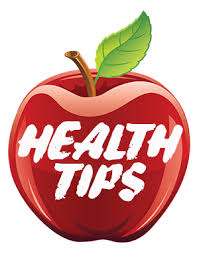health tips
November 29, 2019
Calcium: sources other than milk!
Calcium: sources other than milk!
You don't have to consume milk and milk products just to supply calcium. Where is calcium other than milk? There are many sources, and this article lists the most important ones.
Calcium is the most common mineral in the body, where is the calcium? 99% of the calcium in the body is found in the bones and teeth and supports its building, the rest is found in the muscles, in the blood and in other body fluids.
The importance of calcium
Calcium is essential for muscle activity, including cardiovascular muscle, hormone secretion, enzymes and so on.
Bones in our body are constantly undergoing decomposition and bone building, the process in which calcium is involved, since the pace of construction in children is higher than decomposition.
When we reach middle age, the pace of construction becomes equal to the rate of decomposition, and in adults (especially postmenopausal women) the frequency of construction becomes less than decomposition, thus reducing bone mass and increasing the likelihood of osteoporosis.
Bones form the body's "calcium buffer" in times of deficiency. When the body does not have enough calcium, it begins by analyzing calcium from the bones to maintain its proper level in blood and muscle, and excess calcium is excreted with urine.
Thus, lack of calcium in food over many years may cause osteoporosis and osteoporosis.
General sources of calcium
Contrary to popular belief, milk is not the only or exclusive source of calcium. There are many plant sources of calcium, such as:
Vegetables (such as cabbage, berkeley and okra).
Soy.
Sea algae and various seafood.
Nuts and seeds.
Legumes.
Tahini and tofu.
In most grains (wheat, barley, rice, oats, millet and corn) there are no high amounts of calcium, unless they are improved and rich in calcium, but they give our bodies a lot of calcium because we consume it a lot.
As well as many fruit juices, different drinks, tofu and various grains as well as morning cereals and carrots, are also rich in calcium.
Tahini from whole sesame is rich in calcium up to seven times more than regular tahini.
Some examples of calcium sources
These are the most important examples of calcium sources:
1- Soybean
Soy is naturally rich in calcium, and often manufactured soy products such as tofu and soy milk are rich in added calcium.
In 200 g of tofu there is a little more calcium than a cup of milk (about 200 mg). Calcium-fortified tofu products can also be found, which contain 1300 mg of calcium at a dose of 200 grams.
2 - Tahini
Tahini from whole sesame is rich in calcium up to seven times more than regular tahini. The amount of calcium in two tablespoons of whole raw tahini is roughly equal to the amount of calcium in a glass of milk (about 200 mg).
3- Flax seeds
In addition to being an excellent source of omega-3, in four tablespoons of ground flaxseed there are also 74 mg of calcium.
In some legumes there is a good amount of calcium, especially in soy and white beans.
4- Green vegetables
Green vegetables (such as broccoli, cabbage, beans and peas) contain a large amount of calcium compared to the number of calories.
But you should consume a relatively large amount of them to get enough calcium.
5 - Seitan
Seitan is a plant-like and is based mainly on wheat protein. Sometimes manufacturers add a high amount of calcium to it.
Vegetable or animal calcium?
One of the common arguments against the use of vegetable calcium is that it is not completely absorbed by the body. In fact there are substances that inhibit the absorption of calcium from plant foods. For example:
Phytic acid found in cereals and vegetables.
Oxalic acid found in some fruits and vegetables.
But according to a 2007 study published in the Journal of Food Composition and Analysis on calcium absorption from different sources, the following results emerged:
The calcium absorption ratio of soy milk and tofu is similar to that of cow's milk.
Calcium absorption from broccoli, cabbage and cabbage is almost twice as high as calcium absorption from cow's milk.
Another argument supporting the consumption of vegetable protein is the fact that consumption of salt and animal protein promotes the excretion of calcium from the bones.
Recommended rations of calcium
Some ministries of health and health authorities have officially recommended the consumption of the following quantities and quotas:
1000 mg of calcium per day for adults, a recommendation based on the fact that the Western Mediterranean diet contains large amounts of salt and animal protein.
840 mg of calcium per day to make up for the calcium we lose when we consume 60 grams of animal protein and 3.45 grams of sodium per day.
Vegetable protein does not promote calcium production, so if you rely on calcium intake from plant foods, you may be satisfied with less calcium.
By Dr Mahad Shah
Ms Productions
You don't have to consume milk and milk products just to supply calcium. Where is calcium other than milk? There are many sources, and this article lists the most important ones.
Calcium is the most common mineral in the body, where is the calcium? 99% of the calcium in the body is found in the bones and teeth and supports its building, the rest is found in the muscles, in the blood and in other body fluids.
The importance of calcium
Calcium is essential for muscle activity, including cardiovascular muscle, hormone secretion, enzymes and so on.
Bones in our body are constantly undergoing decomposition and bone building, the process in which calcium is involved, since the pace of construction in children is higher than decomposition.
When we reach middle age, the pace of construction becomes equal to the rate of decomposition, and in adults (especially postmenopausal women) the frequency of construction becomes less than decomposition, thus reducing bone mass and increasing the likelihood of osteoporosis.
Bones form the body's "calcium buffer" in times of deficiency. When the body does not have enough calcium, it begins by analyzing calcium from the bones to maintain its proper level in blood and muscle, and excess calcium is excreted with urine.
Thus, lack of calcium in food over many years may cause osteoporosis and osteoporosis.
General sources of calcium
Contrary to popular belief, milk is not the only or exclusive source of calcium. There are many plant sources of calcium, such as:
Vegetables (such as cabbage, berkeley and okra).
Soy.
Sea algae and various seafood.
Nuts and seeds.
Legumes.
Tahini and tofu.
In most grains (wheat, barley, rice, oats, millet and corn) there are no high amounts of calcium, unless they are improved and rich in calcium, but they give our bodies a lot of calcium because we consume it a lot.
As well as many fruit juices, different drinks, tofu and various grains as well as morning cereals and carrots, are also rich in calcium.
Tahini from whole sesame is rich in calcium up to seven times more than regular tahini.
Some examples of calcium sources
These are the most important examples of calcium sources:
1- Soybean
Soy is naturally rich in calcium, and often manufactured soy products such as tofu and soy milk are rich in added calcium.
In 200 g of tofu there is a little more calcium than a cup of milk (about 200 mg). Calcium-fortified tofu products can also be found, which contain 1300 mg of calcium at a dose of 200 grams.
2 - Tahini
Tahini from whole sesame is rich in calcium up to seven times more than regular tahini. The amount of calcium in two tablespoons of whole raw tahini is roughly equal to the amount of calcium in a glass of milk (about 200 mg).
3- Flax seeds
In addition to being an excellent source of omega-3, in four tablespoons of ground flaxseed there are also 74 mg of calcium.
In some legumes there is a good amount of calcium, especially in soy and white beans.
4- Green vegetables
Green vegetables (such as broccoli, cabbage, beans and peas) contain a large amount of calcium compared to the number of calories.
But you should consume a relatively large amount of them to get enough calcium.
5 - Seitan
Seitan is a plant-like and is based mainly on wheat protein. Sometimes manufacturers add a high amount of calcium to it.
Vegetable or animal calcium?
One of the common arguments against the use of vegetable calcium is that it is not completely absorbed by the body. In fact there are substances that inhibit the absorption of calcium from plant foods. For example:
Phytic acid found in cereals and vegetables.
Oxalic acid found in some fruits and vegetables.
But according to a 2007 study published in the Journal of Food Composition and Analysis on calcium absorption from different sources, the following results emerged:
The calcium absorption ratio of soy milk and tofu is similar to that of cow's milk.
Calcium absorption from broccoli, cabbage and cabbage is almost twice as high as calcium absorption from cow's milk.
Another argument supporting the consumption of vegetable protein is the fact that consumption of salt and animal protein promotes the excretion of calcium from the bones.
Recommended rations of calcium
Some ministries of health and health authorities have officially recommended the consumption of the following quantities and quotas:
1000 mg of calcium per day for adults, a recommendation based on the fact that the Western Mediterranean diet contains large amounts of salt and animal protein.
840 mg of calcium per day to make up for the calcium we lose when we consume 60 grams of animal protein and 3.45 grams of sodium per day.
Vegetable protein does not promote calcium production, so if you rely on calcium intake from plant foods, you may be satisfied with less calcium.
By Dr Mahad Shah
Ms Productions













































